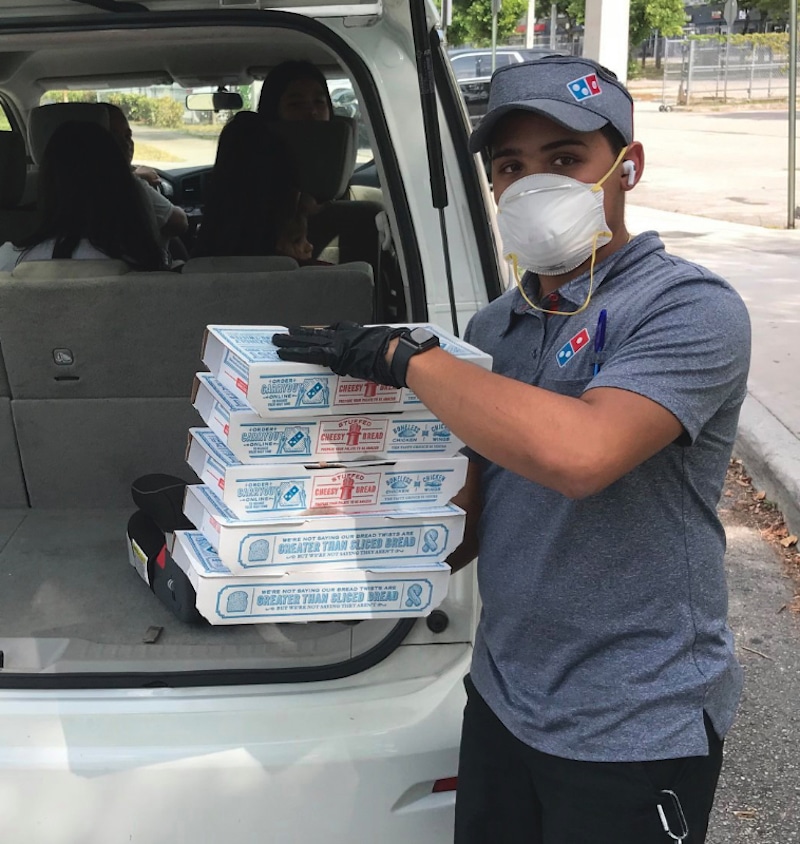- Domino’s fortressing strategy shrinks delivery radiuses, putting stores as close as possible to as many customers as possible.
- The chain’s domestic same-store sales soared by 17.5 percent in the third quarter of 2020, and the company saw a net growth of 44 restaurants in the U.S.
- Using its own in-house delivery drivers, instead of third-party delivery companies, gives Domino’s more flexibility and control over fees and the customer experience, said CFO Stu Levy.
Related: Domino’s aims for 8,000 stores in the U.S.
Domino’s is committed to its strategy of building out more and more stores, even in areas that already have existing locations. Why? Because it’s working, and the chain has kept thriving, even in one of the most challenging years in the history of the restaurant industry, as Stu Levy, the chain’s executive vice president and CFO, said in a presentation at the ICR Conference this week.
Domino’s fortressing strategy shrinks delivery radiuses and makes it easier to get pizzas to customers quickly and less expensively, meeting the ever-growing demand for speed and convenience in food delivery and carryout, Nation’s Restaurant News quoted Levy as saying at the ICR event. “How do you provide great service? By getting as close as you can to the customer. We do that at a lower cost, which enables delivery drivers to make more deliveries and make more tips. Then, they’re happier, the customer is happier, and it drives all of that growth.”
Carryout, meanwhile, also remains an important higher-profit center for Domino’s. Noting that customers won’t drive 30 minutes for a carryout pizza, Levy added, “We’ll continue to make investments in building stores out.”
Related: What does the future of pizza look like?
Domino’s saw its second-quarter 2020 sales rise by 7.1 percent despite (or perhaps because of) the pandemic, while digital sales climbed to 75-80 percent of total U.S. revenues. And the company was just getting warmed up. In the third quarter, the company’s same-store sales in the U.S. soared by 17.5 percent, while international same-store sales grew by 6.2 percent.
The positive growth in the U.S. was “the strongest same-store sales number we’ve posted in our U.S. business” over the past 10 years, Domino’s President and CEO Ritch Allison said in a conference call on October 8. “We achieved this remarkable level of growth without running any aggressive promotions during the quarter.”
Also in the third quarter, the company reported net growth of 44 stores in the U.S. “This is a terrific result when you consider what is happening across the category and more broadly across the U.S. restaurant industry,” Allison said at the time.
At the ICR Conference, Levy noted that Domino’s is also logging major growth without resorting to third-party delivery, unlike many of its big-chain rivals. He said using its own in-house delivery drivers gives Domino’s more flexibility and control over fees and the customer experience.
“The feeling you get when you see so-called free delivery with a $12 service, it doesn’t start to feel free anymore,” he said, according to NRN. “We have a lot of questions about what long-term sustainability means [for third-party delivery],” he added.
Related: Domino’s unveils its first new specialty pizzas in 8 years













